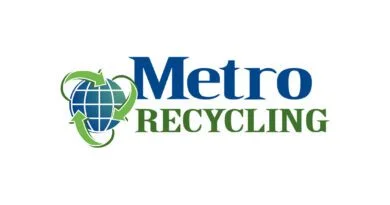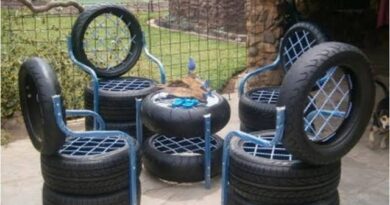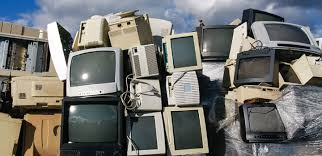Recycling Metal for Money: A Beginner’s Guide
Recycling metal for money is not just a sustainable practice but also a rewarding one. It presents an excellent opportunity to contribute to the environment’s well-being while earning some extra cash. The process involves collecting discarded metal items, processing them, and then selling them to scrap yards or recycling centers. This straightforward and eco-friendly endeavor has gained popularity over the years, and for good reason.
First and foremost, recycling metal is an essential step towards conserving natural resources. By reusing metals, we reduce the need for extensive mining operations, which can be harmful to the environment and often disruptive to local ecosystems.
Additionally, recycling metal consumes far less energy compared to extracting raw materials, making it a more energy-efficient option. This conservation of resources and energy leads to a reduction in greenhouse gas emissions, contributing positively to the fight against climate change.
The variety of metals that can be recycled for money is vast, ranging from common household items to industrial materials. Aluminum, copper, brass, steel, and iron are among the most sought-after metals in the recycling industry. Items like soda cans, old electronics, wires, pipes, and even car parts can all be turned into valuable resources when recycled properly.
Recycling metal for money also supports local economies and job creation. Scrap yards and recycling centers provide employment opportunities to people involved in the collection, sorting, and processing of metal materials. Moreover, the demand for recycled metals often results in competitive prices for sellers, making it a lucrative venture for individuals and businesses alike.
Participating in metal recycling is relatively easy. The first step is to collect and segregate metal items from your household or workplace that are no longer in use. It is crucial to ensure that the collected metals are free from contaminants such as plastics or other non-metal materials, as these can reduce the value of the scrap and complicate the recycling process.
Next, take your sorted metal collection to a reputable scrap yard or recycling center. These facilities have the expertise and equipment to assess the value of your materials accurately. Prices are usually based on the type of metal, weight, and current market rates. Be sure to inquire about the prevailing prices to get the best value for your efforts.
Recycling metal not only benefits individuals but also plays a significant role in global sustainability efforts. By reusing metals, we reduce the burden on landfills, minimize the need for new raw materials, and promote a circular economy. This circular approach ensures that valuable resources are continuously cycled and reused, lessening our impact on the planet.
However, recycling metal for money is a simple yet impactful practice that anyone can adopt. It not only offers financial incentives but also makes a positive difference in the environment and the economy. By participating in metal recycling, we contribute to a cleaner, greener future while reaping the rewards of our efforts. So, let’s embrace this eco-friendly endeavor and be a part of the solution for a more sustainable world.
Read Also: Efficient Solutions for Food Waste Disposal
Preparing Metal Scrap For Recycling (Recycling Metal for Money)

Preparing metal scrap for recycling is a crucial step in the recycling process to ensure the efficient and effective extraction of valuable metals while minimizing environmental impact.
Properly preparing metal scrap involves several key steps:
1. Collection and Segregation: Collect metal scrap from various sources, such as discarded household items, old appliances, automotive parts, construction waste, and industrial equipment. Segregate different types of metals to prevent contamination and simplify the recycling process. Commonly recycled metals include steel, aluminum, copper, brass, and stainless steel.
2. Cleaning and Removal of Non-Metallics: Before recycling, clean the metal scrap to remove dirt, oil, grease, and other contaminants. Non-metallic attachments, like plastic, rubber, and glass, must be removed to improve the quality of the recycled metal. Non-metallic components can interfere with the melting and refining process and may decrease the value of the final product.
3. Cutting and Shredding: For larger metal items, such as appliances and machinery, cutting and shredding may be necessary to reduce their size and volume. Smaller pieces are easier to handle and transport, optimizing the recycling process and reducing energy consumption during melting and refining.
4. Magnetic Separation: Utilize magnets to separate ferrous metals (those containing iron) from non-ferrous metals. Magnets attract ferrous metals, allowing them to be easily separated from other non-magnetic metals. This step streamlines the recycling process and ensures the purity of the recycled materials.
5. Non-Ferrous Metal Identification: Distinguish between different non-ferrous metals (e.g., aluminum, copper, brass) using various identification techniques. This helps in sorting the metals accurately and obtaining a higher value for each type of metal.
6. Quality Control: Conduct quality checks to ensure the metal scrap meets recycling standards and complies with industry regulations. This involves checking for the presence of hazardous materials or radioactive substances that could pose a risk during the recycling process.
7. Weighing and Recording: Weigh the prepared metal scrap to determine the quantity of each metal type. Accurate records are crucial for inventory management and pricing during the selling process.
8. Storage and Transportation: Store the prepared metal scrap in a clean and organized manner to prevent further contamination or damage. Arrange for proper transportation to the recycling facility using trucks or other suitable means.
9. Responsible Recycling: Choose reputable recycling facilities that adhere to environmentally responsible practices and comply with all relevant regulations. Responsible recycling ensures that the metal scrap is processed safely and efficiently, minimizing waste and emissions.
Preparing metal scrap for recycling is an essential step in the sustainable management of valuable resources and reducing the burden on the environment. By following proper preparation methods, we can optimize the recycling process, extract valuable metals, and contribute to a cleaner and greener planet. Recycling metal scrap not only conserves natural resources but also supports the circular economy by turning waste into valuable raw materials for new products and applications.
Example of Basin
A basin is a type of large bowl or container used for holding water or other liquids. It can come in various shapes, sizes, and materials to serve different purposes. Here’s an example of a basin:
Imagine a classic porcelain bathroom basin, commonly found in many households. It is typically mounted on a vanity or countertop and used for various personal hygiene activities, such as washing hands, brushing teeth, or splashing the face. This basin features a smooth, glossy surface and may have a single faucet or separate hot and cold water taps. It has a drain at the bottom to allow water to flow out when needed.
The basin’s design is both functional and aesthetically pleasing, complementing the overall decor of the bathroom. Its depth and size offer ample space for washing, and the durable porcelain material ensures it can withstand daily use.
In this example, the basin serves as an essential fixture in a residential bathroom, illustrating its practicality and everyday usefulness in our lives. However, basins are not limited to bathrooms; they can also be found in kitchens, laboratories, outdoor settings, and various industrial applications, each tailored to meet specific needs.
Read Also: The Role of Waste Collection Companies in a Sustainable Future
Difference Between Forest and Woods

The terms “forest” and “woods” are often used interchangeably, but they do have some distinctions in their meaning, scale, and context.
A forest is a large, densely wooded area with a considerable expanse of trees and vegetation. It typically covers a significant land area, often extending for miles and can be home to a diverse range of plant and animal species.
Forests can be quite vast and may even encompass multiple ecosystems within them. On the other hand, “woods” refer to a smaller and less extensive area of trees. Woods are often characterized by a less dense collection of trees and may cover a relatively smaller piece of land compared to a forest. They can be found near residential areas or as smaller patches within a larger forested area.
Forests are characterized by a higher density of trees, resulting in a more closed canopy, which means the tree branches and leaves form a continuous cover overhead. This density often makes it more challenging to navigate through a forest, especially in areas with thick undergrowth.
Woods, being smaller and less dense, may have more sunlight reaching the ground due to the presence of more widely spaced trees. This can result in a more open and inviting environment, easier to walk through and explore.
Forests usually have a more significant ecological and conservation importance due to their larger size and ability to support a wide variety of plant and animal species. They play a crucial role in maintaining biodiversity, regulating the climate, and providing various ecosystem services.
While woods may also contribute to local biodiversity and environmental health, their smaller size and limited scope may not have the same level of impact as a large, expansive forest.
The terms “forest” and “woods” can sometimes be influenced by cultural and regional differences. For example, in some regions, the word “woods” might be used more frequently to describe areas with trees, while in others, “forest” may be the more commonly used term for any wooded area, regardless of its size.
However, the main difference between a forest and woods lies in their size, density, and ecological significance. A forest is a larger and denser wooded area with considerable ecological importance, while woods are smaller, less dense areas of trees often found in closer proximity to human settlements.
The Only Metal That is Liquid At Room Temperature
Mercury is the only metal that is liquid at room temperature. It has the chemical symbol Hg and is commonly known as quicksilver. Mercury is a unique metal because it remains in a liquid state between -38.83°C (-37.89°F) and 356.73°C (674.11°F), which includes typical room temperatures.
Due to its unusual physical properties, such as low melting point and high density, mercury has been used in various applications over the centuries, including thermometers, barometers, and some electrical switches. However, due to its toxic nature, mercury is now used less frequently in consumer products and industrial applications. Proper handling and disposal of mercury-containing devices are essential to prevent environmental contamination and health risks.
Read Also: Soybean Meal: Health Benefits, Healing Powers and Uses



